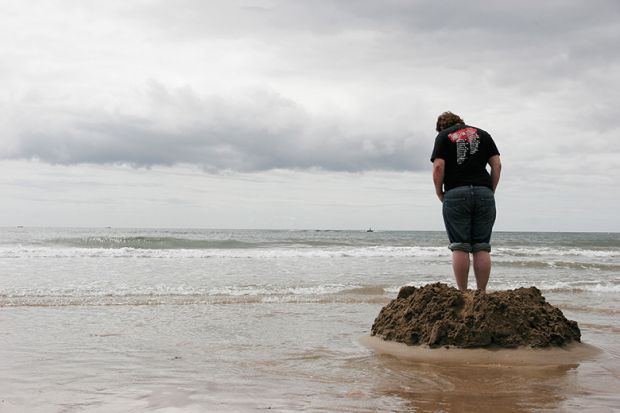It is nearly August already. Have you got much research done yet?
If the answer to that question is “no”, you are likely to be far from alone. According to a straw poll carried out for our cover feature this week, summer’s traditional status as a haven from the demands of teaching and administration is being eroded as quickly as a sandcastle in the incoming tide.
More than three-quarters of respondents to the admittedly small survey expect to be able to complete 30 days or fewer of research over the three months of summer, and nearly a third expect to complete 10 days or fewer. Just one in 10 says that this is more time than a decade earlier, while six in 10 say that it is less.
As for the rest of the year, although the standard academic contract states that 40 per cent of individuals’ time should be spent on research, 80 per cent of our respondents do not believe that it is possible to do that within their contracted hours.
That is borne out by an article Times Higher Education published last year by Michael Marinetto, senior lecturer in public management at Cardiff University. Over the course of a year, he recorded exactly how much time he spent on research. He was supposed to spend the standard 40 per cent, but, in reality, he only spent 23 per cent (“WAM trouble? I’m your man”, Opinion, 25 January 2018).
You might argue that contracted hours are irrelevant to academics, who have always seen evenings and weekends as fair game for what is, in essence, a labour of love. Only last week, Lee Cronin, Regius chair of chemistry at the University of Glasgow, caused quite a stir on social media when he said that it was “damaging to suggest it’s possible that anyone can do world-class science in 38 hrs per week”.
Yet surely something is amiss if people are using even their annual leave to do research, as several of our respondents intend to, because they cannot find any other time to meet the requirements of their “workload allocation model”?
In academia, as in all things, the most concrete and urgent commitments always take priority. And teaching and administration fit that description better than research projects that only have to be submitted before the next research excellence framework deadline. If the former expand, the latter is what must give.
Perhaps that is fine. After all, universities have been repeatedly told that they prioritise research to the detriment of their primary teaching mission. But, teaching excellence framework notwithstanding, individual and institutional reputation still rides largely on research. Moreover, governments around the world are clear that they expect university research to drive industrial innovation and economic growth.
If it is becoming increasingly impossible for individuals to juggle both teaching and research, is it time to separate the two?
Russell Group lobbyists insist that research-informed teaching marks out its members as superior. However, the results of the National Student Survey indicate that this is not always evident to students. According to David Palfreyman, director of the Oxford Centre for Higher Education Policy Studies, “the supposed link between research and teaching is a bit of a sacred cow, but there is almost no research on it”. And in his contribution to Australia’s intensifying debate on whether some universities should be designated teaching-only, Sydney mathematician John Loxton notes that research universities already have teaching-only units and staff, as well as separate research institutes. Specifying research activity as a prerequisite for university status “seems to boil down to sentiment”, he concludes.
But it is a sentiment that is widely shared among academics, whose commitment to research is virtually guaranteed by the standard requirement for entrants to the profession to have many years of research experience. Research is not a hook that academics generally want to be let off; it is the administration that they don’t like.
In our survey, respondents are divided on whether the 40/40/20 split between teaching, research and administration is still the ideal one – but not, as Kathleen Fitzpatrick, director of digital humanities and professor of English at Michigan State University, points out, if it takes “120 hours a week” to live up to it. In an era of rising demands among students and declining mental health among academics, something evidently needs to give.
Marinetto’s conclusion is that the research target needs to be revised downwards: “The demands of teaching and administration in the modern corporate university make it a near impossibility to dedicate more than a third of academic time to research,” he believes.
Is he right? If you make it to the beach this summer, it may well be a question worth pondering as the waves gradually eat away at your lovingly constructed replica of your university’s social sciences building.
POSTSCRIPT:
Print headline: Academic life’s no beach
Register to continue
Why register?
- Registration is free and only takes a moment
- Once registered, you can read 3 articles a month
- Sign up for our newsletter
Subscribe
Or subscribe for unlimited access to:
- Unlimited access to news, views, insights & reviews
- Digital editions
- Digital access to THE’s university and college rankings analysis
Already registered or a current subscriber? Login








